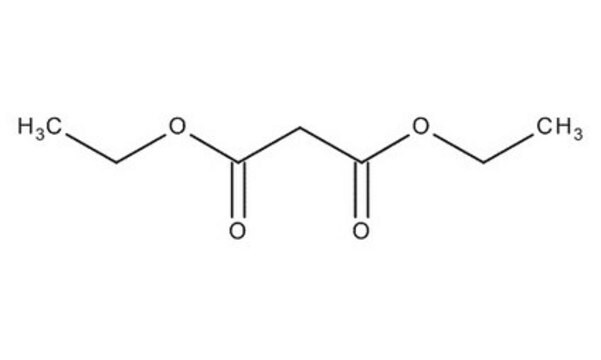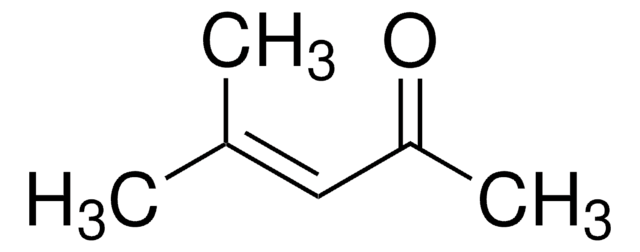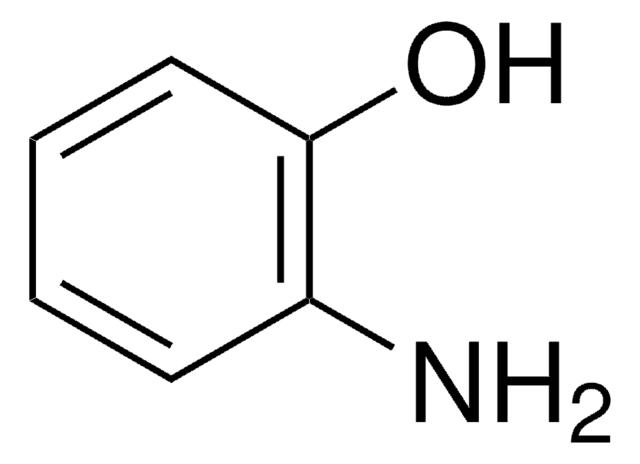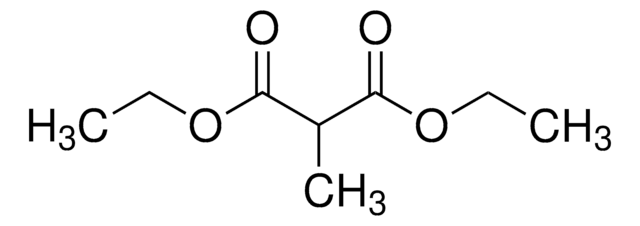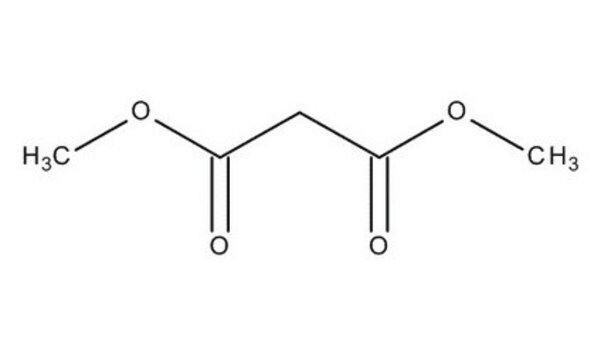D97754
Diethyl malonate
ReagentPlus®, 99%
Synonyme(s) :
Malonic acid diethyl ester
About This Item
Produits recommandés
Densité de vapeur
5.52 (vs air)
Niveau de qualité
Pression de vapeur
1 mmHg ( 40 °C)
Gamme de produits
ReagentPlus®
Pureté
99%
Forme
liquid
Indice de réfraction
n20/D 1.413 (lit.)
Point d'ébullition
199 °C (lit.)
Pf
−51-−50 °C (lit.)
Densité
1.055 g/mL at 25 °C (lit.)
Chaîne SMILES
CCOC(=O)CC(=O)OCC
InChI
1S/C7H12O4/c1-3-10-6(8)5-7(9)11-4-2/h3-5H2,1-2H3
Clé InChI
IYXGSMUGOJNHAZ-UHFFFAOYSA-N
Vous recherchez des produits similaires ? Visite Guide de comparaison des produits
Catégories apparentées
Description générale
Application
Conditionnement
Informations légales
Mention d'avertissement
Warning
Mentions de danger
Conseils de prudence
Classification des risques
Eye Irrit. 2
Code de la classe de stockage
10 - Combustible liquids
Classe de danger pour l'eau (WGK)
WGK 1
Point d'éclair (°F)
199.4 °F - closed cup
Point d'éclair (°C)
93 °C - closed cup
Équipement de protection individuelle
Eyeshields, Gloves, multi-purpose combination respirator cartridge (US)
Faites votre choix parmi les versions les plus récentes :
Déjà en possession de ce produit ?
Retrouvez la documentation relative aux produits que vous avez récemment achetés dans la Bibliothèque de documents.
Les clients ont également consulté
Articles
Knoevenagel Condensation is an organic reaction named after Emil Knoevenagel. It is a classic C-C bond formation reaction and a modification of the Aldol Condensation.
Notre équipe de scientifiques dispose d'une expérience dans tous les secteurs de la recherche, notamment en sciences de la vie, science des matériaux, synthèse chimique, chromatographie, analyse et dans de nombreux autres domaines..
Contacter notre Service technique